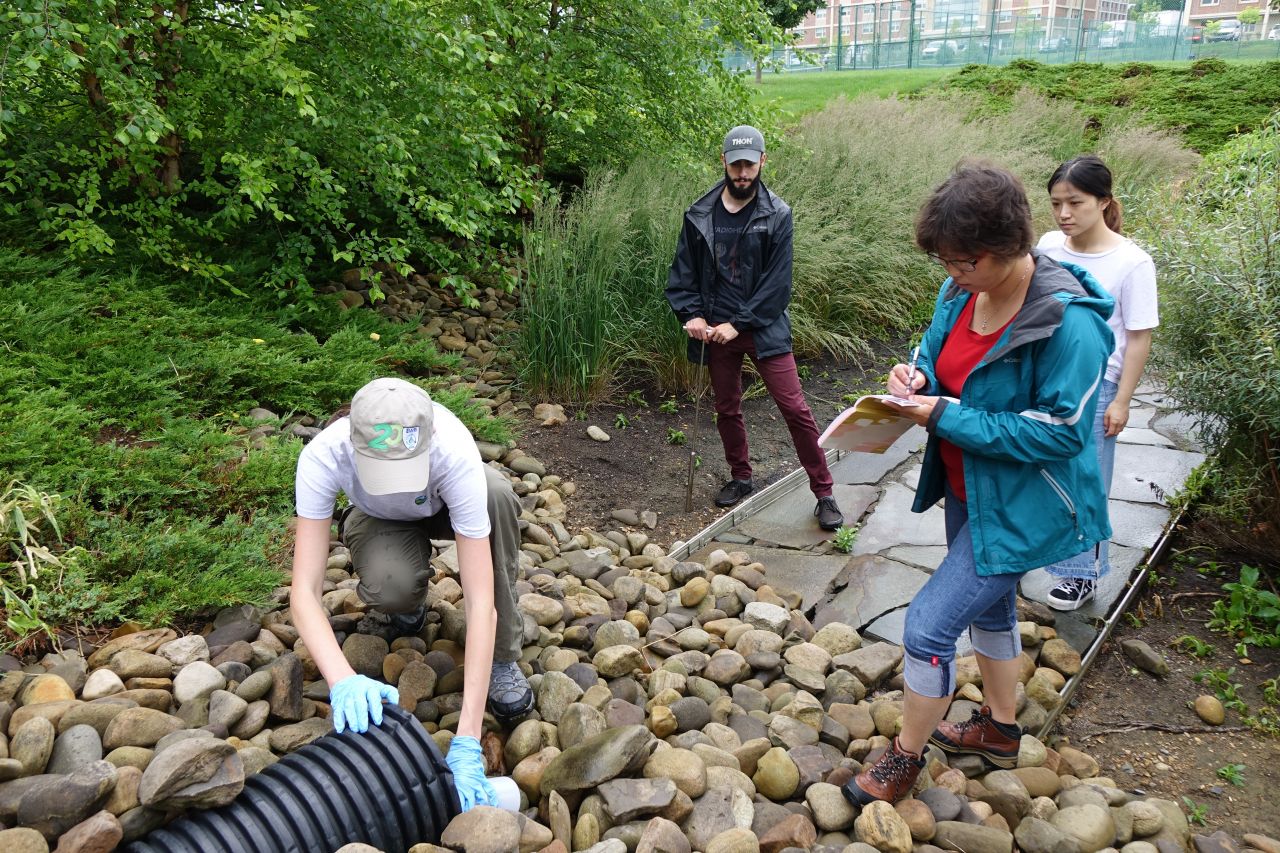June 24, 2019
Strategic plan seed grant supports green stormwater infrastructure research

UNIVERSITY PARK, Pa. – A proposal that will support the development of a living laboratory for green stormwater infrastructure (GSI) research, education and innovation at Penn State is among the latest initiatives to receive funding through the University’s Strategic Plan Seed Grant program.
The project, titled “Greening our stormwater: using campuses as living labs for green stormwater infrastructure,” supports the strategic plan theme of Stewarding our Planet’s Resources.
The research team is led by Hong Wu, assistant professor of landscape architecture, whose vision is to position Penn State as a national leader in GSI by building a campus community with the capacity to implement long-term cost-effective solutions to water quality and quantity.
Wu has assembled an interdisciplinary team of researchers for the project, including: Lauren McPhillips, assistant professor in the Departments of Civil and Environmental Engineering and Agricultural and Biological Engineering; Odette Mina, managing director of the Energy and Environmental Sustainability Laboratories; Daniel Brent, assistant professor in the Department of Agricultural Economics, Sociology, and Education; Shirley Clark, professor of environmental engineering at Penn State Harrisburg; Andy Cole, associate professor in the Department of Landscape Architecture and the director of the Ecology Plus Design (E+D) research initiative; Andrew Gutberlet, manager of engineering services with the Office of the Physical Plant (OPP); Tom Richard, director of the Institutes of Energy and the Environment and professor in the Department of Agricultural and Biological Engineering; Meghan Hoskins, director of operations and partnerships with the Sustainability Institute; Jennifer Fetter, water resources extension educator; and Deborah Hoag, director of public works with the Borough of State College.
GSI is a network of systems that slows the rate of stormwater runoff and filters out harmful pollutants before they drain into waterways. Vegetation, soils and other processes that mimic nature – thus the “green” distinction – are used to treat and intercept stormwater at its source. Effective green infrastructure systems also look like gardens, frequently with colorful flowers. In all, this approach reduces localized flooding, improves water quality, enhances community aesthetics and encourages community stewardship.
According to the Environmental Protection Agency, stormwater runoff is one of the fastest growing sources of pollution in the country and so the interest in GSI over the last several decades has increased dramatically. Pennsylvania is no exception when it comes to flooding and water quality issues; however, the Commonwealth has not been the most proactive when it comes to GSI. According to Wu, most of the state’s GSI practices are currently concentrated in a few hotspots such as Philadelphia and Lancaster. This, she says, is in part due to the lack of expertise and uncertainty in expected benefits.
“With a robust extension program and 24 campuses located in different ecoregions across the state, Penn State is in the unique position to address Pennsylvania’s stormwater challenges while fostering a new generation of collaborative professionals that will be equipped to tackle these problems on a national level,” said Wu.
Expanding the current relevant courses at Penn State on stormwater management to include GSI practices is one of the priorities of this project; but the researchers believe it is vital for the students to engage in all phases of stormwater management so they are working with both Penn State OPP to gain access to the current facilities and the Sustainability Institute to establish a living laboratory that engages students.
“Not only will we be teaching them about these practices in classrooms and labs, they will also be getting hands-on experience in the design, monitoring and maintenance of GSI systems here on campus,” said Wu. “Through our partnerships with units across campus, the Borough [of State College] and in Harrisburg, we will be giving students from multiple disciplines the opportunity to collaborate with municipalities, professionals and community partners to improve real-world GSI.”
In addition to the educational aspects of the project, the researchers will be measuring the water management effectiveness of current GSI installations on campus. They will also be measuring the perception faculty, staff and students have of the features by asking the following questions: Do the GSI features offer any educational opportunities? Are they considered aesthetically pleasing? Are they a worthy effort in stewardship?
“It is our goal as educators to encourage the next generation to be better than us and Penn State students will have the experience and skills necessary to influence policy and decisionmakers on stormwater management solutions locally and globally,” said Wu.
Initial funding that led to the project proposal was provided by the E+D initiative in the Stuckeman School.
